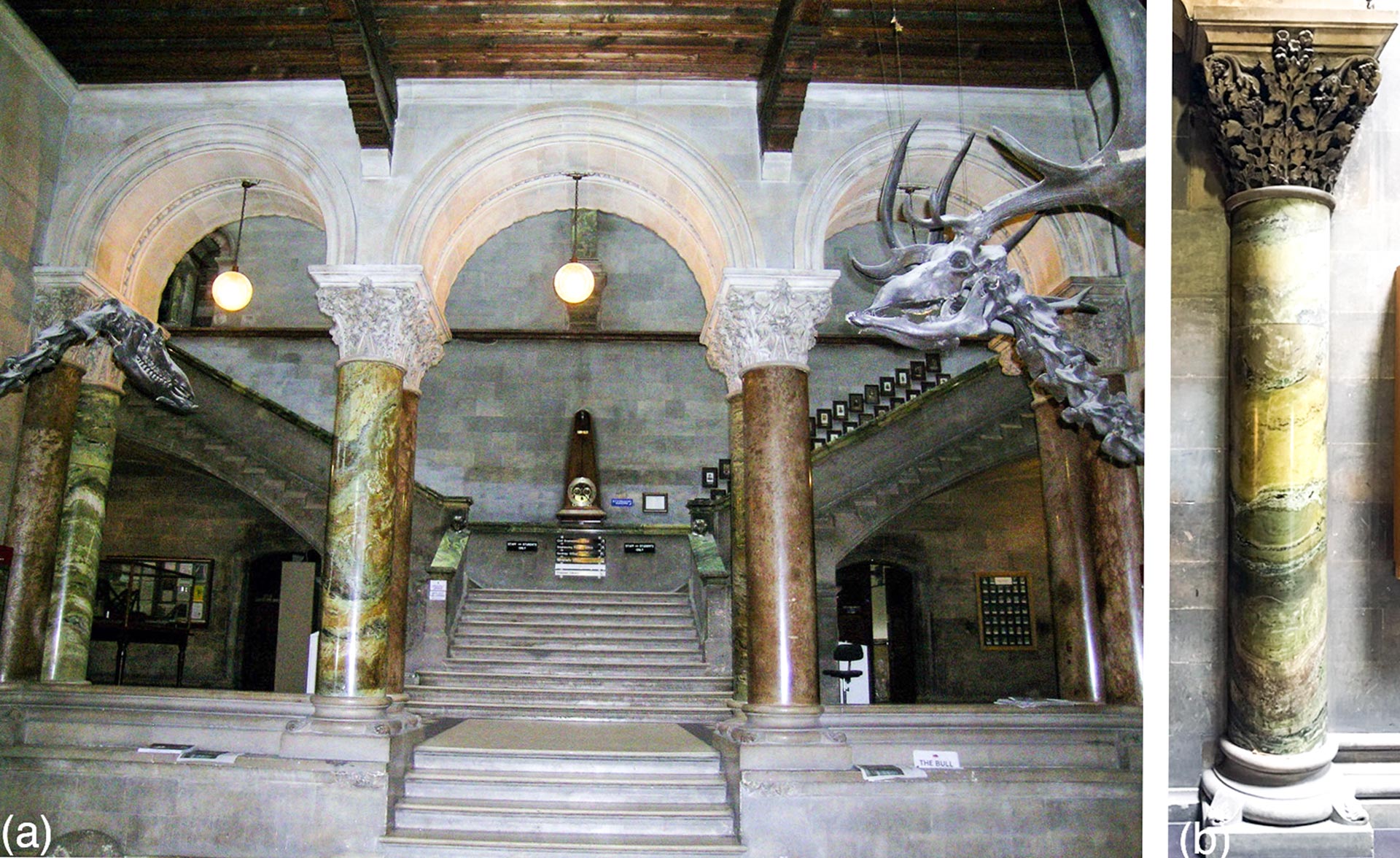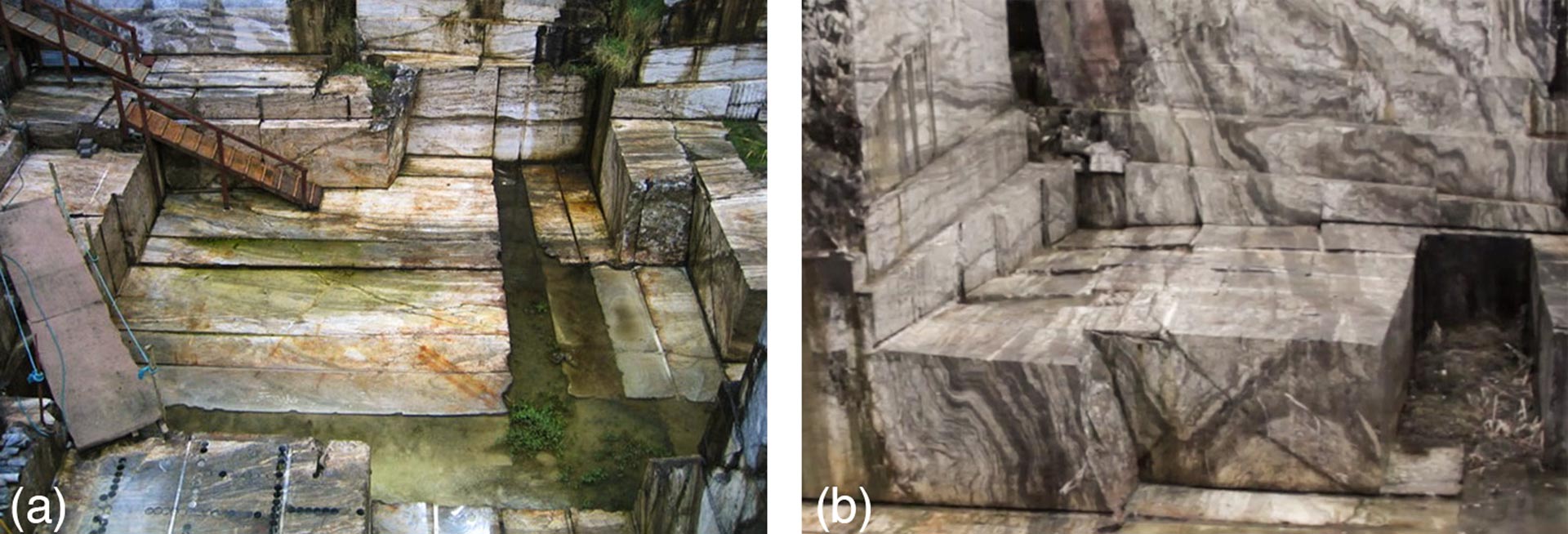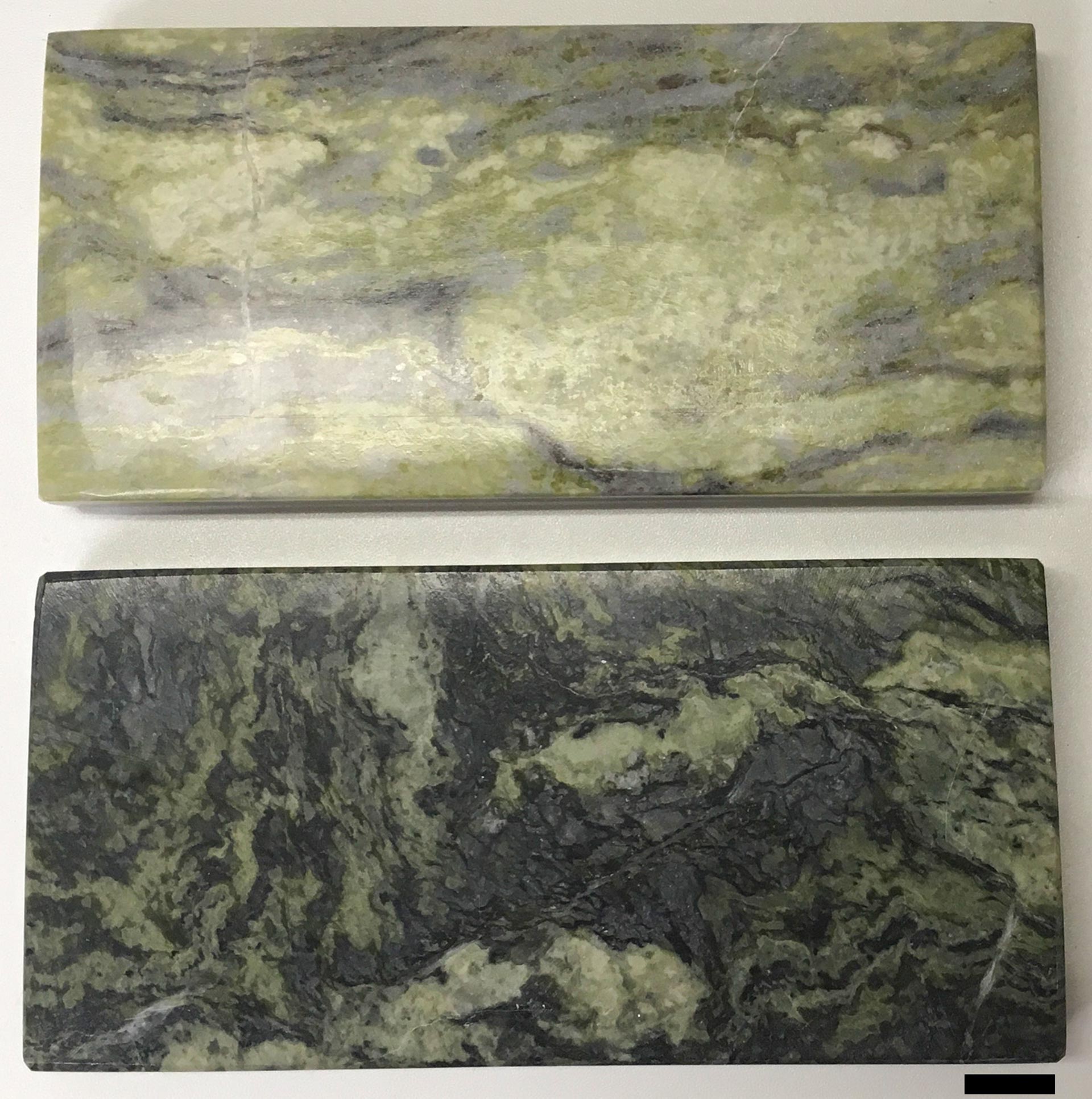
Museum Building of the Trinity College, Dublin, Ireland
Year designation
Lithology
Aesthetics
Geological settings
Neoproterozoic – Ordovician; Grampian Connemara Metamorphic Complex; amphibolite-grade metamorphism of an impure limestone during the Grampian orogeny (Ordovician)
Location
Connemara, County Galway
Museum Building of the Trinity College, Dublin, Ireland
An iconic green marble from Ireland
Connemara Marble has been quarried and fashioned since the eighteenth century. The principal quarries are located at Streamstown, Lissoughter and Ballynahinch in Co. Galway. The stone has been largely employed for decorative purposes in Ireland, Britain and the USA, for chimneypieces, cladding, columns and church fittings. It was expertly used, for example, in St. Canice’s Cathedral in Kilkenny, in the Museum Building of Trinity College in Dublin, in the National History Museum in London, in the Chicago Cultural Center and in the Gould Memorial Library Rotunda at the Bronx Community College in New York (both USA). The earliest utilisation of Connemara Marble appears to be during the Neolithic period for stone axes. However, it was first quarried in any significant volume in the early 1820s by John D’Arcy (1785–1839) of Clifden Castle, and initial exports to London were dispatched in the mid-1820s. Throughout the second half of the nineteenth century and into the early twentieth century production fluctuated, and some quarries became inactive for periods before reopening on an ad-hoc basis. Interest, at times, from abroad and from royalty helped raise awareness of the stone and extraction increased for a period. During the two decades from the 1890s Connemara Marble was championed in the United States by Robert C. Fisher & Co. of New York who worked the Streamstown and Lissoughter Quarries and imported over one million dollars worth of stone. After a post-First World War decline in popularity a brief revival of the Streamstown Quarry occurred from 1932 due to the efforts of Captain Wyndham Waithman, proprietor of the black limestone quarry and marble works at Merlin Park, Galway. The Streamstown stone was widely used for church building in Ireland during the mid-twentieth century, the most famous of which are the Church of Saints Peter and Paul, Athlone and the Cathedral of Our Lady and St Nicholas, Galway. In the 1960s Lord Mayo developed lightweight panels of stone attached to thin aluminium backing, which were used for decoration in aircrafts and boats. Today, most of the small volumes of stone extracted from Streamstown and Lissoughter go to produce tourist souvenirs, while the more extensive excavation from Ballynahinch is largely utilised for decorative panelling in commercial and domestic settings.
- Author(s)
Patrick Wyse Jackson, Louise Caulfield, Martin Feely and Matthew Parkes


